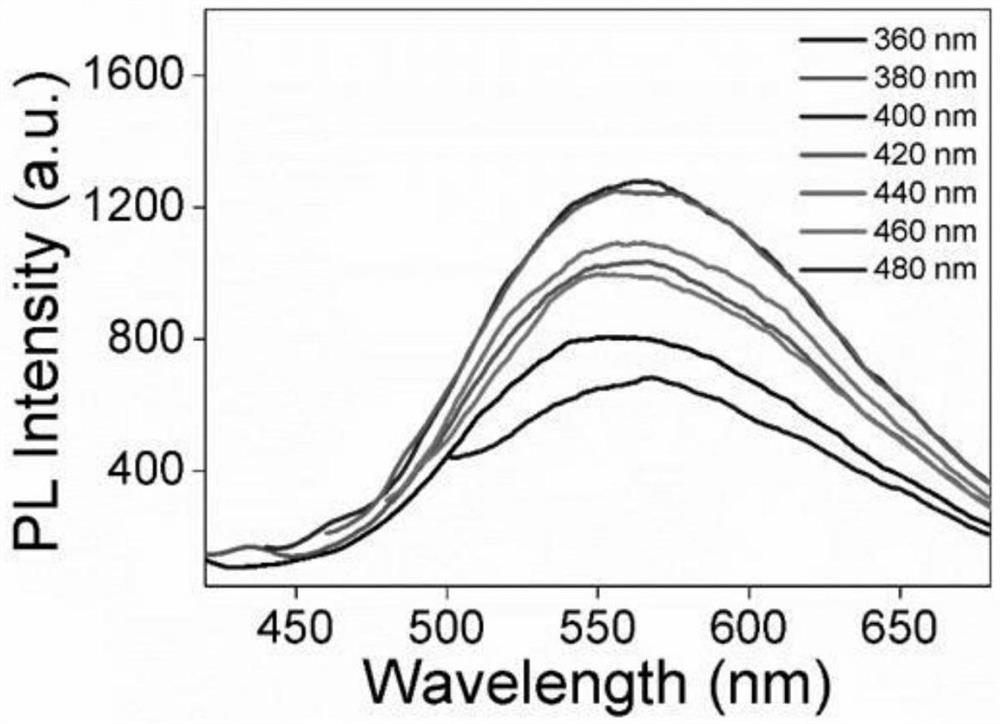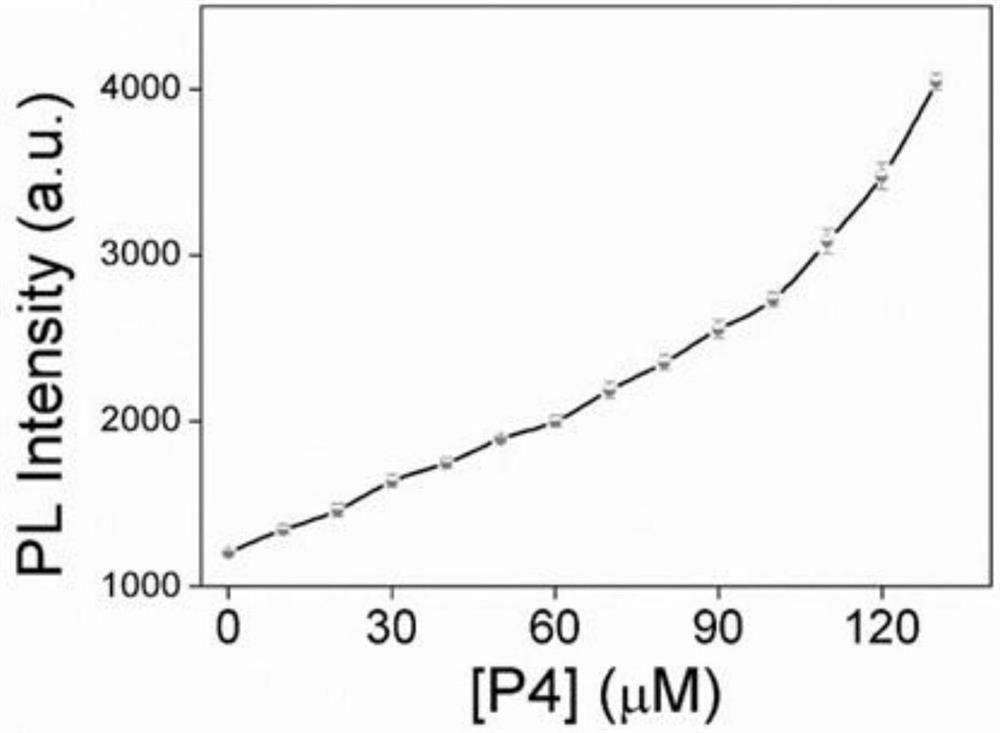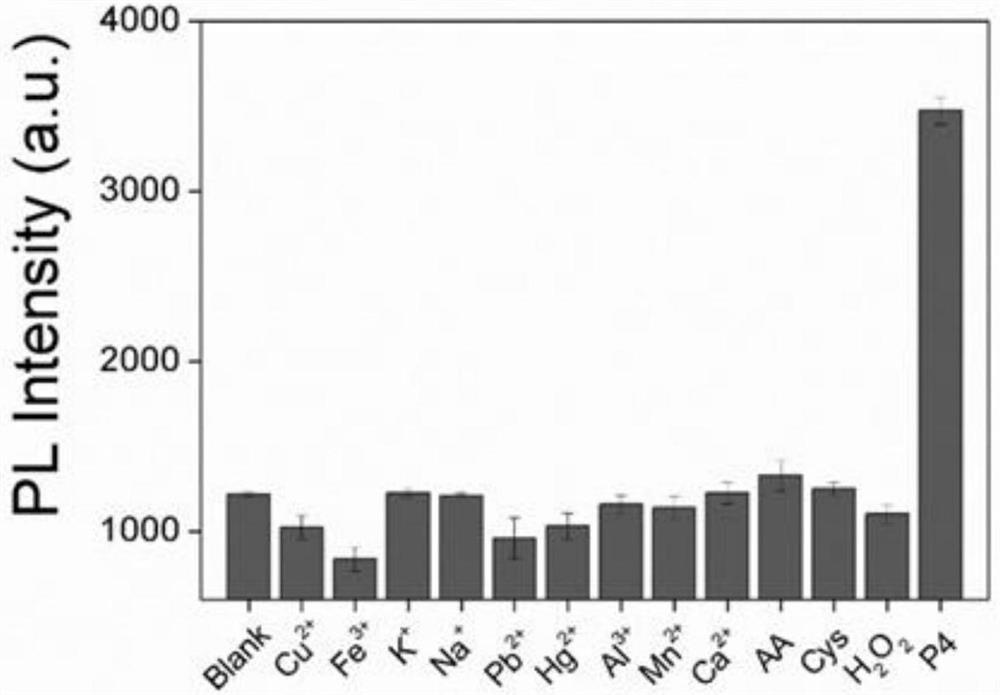Preparation and application of carbon dots for detecting progesterone
A progesterone and carbon dot technology, applied in the field of nanomaterials, can solve the problems of long sample pretreatment time, low sensitivity, long running time, etc., and achieve the effect of good analysis and monitoring ability, broad application prospect and high luminous intensity.
- Summary
- Abstract
- Description
- Claims
- Application Information
AI Technical Summary
Problems solved by technology
Method used
Image
Examples
Embodiment Construction
[0018] A preparation for detecting the carbon point of progesterone is as follows. Weigh 0.5g (permissible range 0.1~2g) of curcumin into a beaker and heat it in a muffle furnace at 180°C (permissible range 170~190°C) for 6 hours, a brown substance was obtained. After the reactor was naturally cooled to room temperature, it was dissolved in an ethanol solvent and centrifuged at 10,000 rpm for 30 minutes, followed by dialysis with a dialysis bag to remove unreacted small molecules. Finally, solid product carbon dot CDs were obtained by freeze-drying method.
[0019] The optical properties of carbon dot CDs prepared by the above preparation method are:
[0020] Such as figure 1 As shown, the maximum excitation wavelength of carbon dots is at 410nm, and the maximum emission peak is at 560nm.
[0021] The fluorescent carbon dot CDs prepared by the above preparation method are used for the detection of progesterone as follows,
[0022] First, progesterone solutions with differe...
PUM
 Login to View More
Login to View More Abstract
Description
Claims
Application Information
 Login to View More
Login to View More - R&D Engineer
- R&D Manager
- IP Professional
- Industry Leading Data Capabilities
- Powerful AI technology
- Patent DNA Extraction
Browse by: Latest US Patents, China's latest patents, Technical Efficacy Thesaurus, Application Domain, Technology Topic, Popular Technical Reports.
© 2024 PatSnap. All rights reserved.Legal|Privacy policy|Modern Slavery Act Transparency Statement|Sitemap|About US| Contact US: help@patsnap.com










